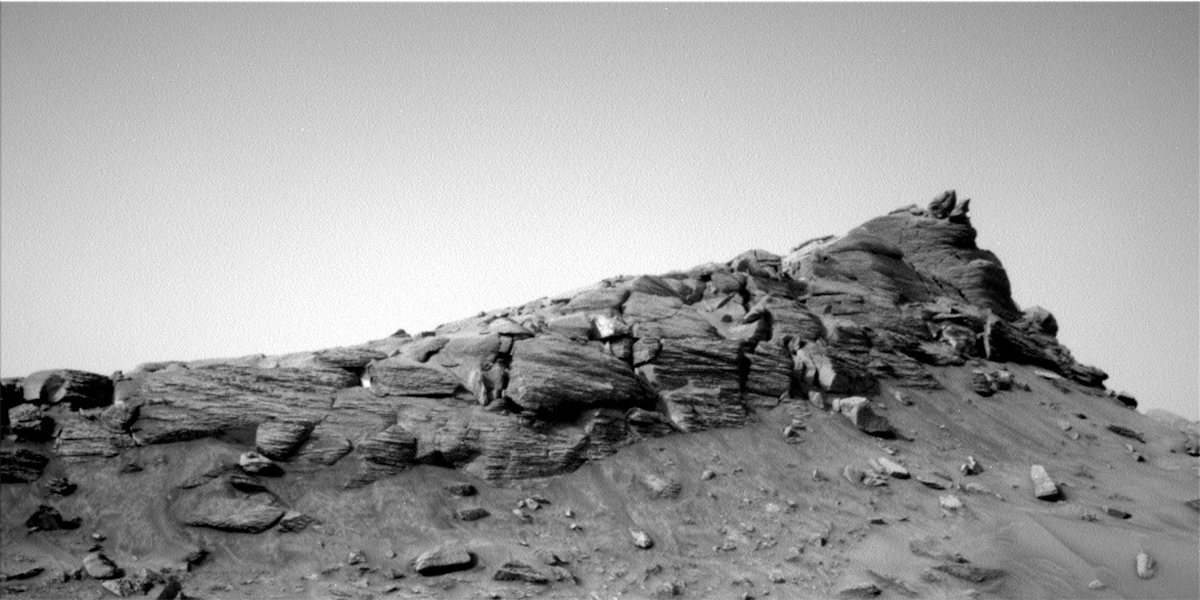4 min read

Still stuffed and feeling thankful our weekend plans were successful! This morning’s downlink showed we had more power to play with than was modeled last week, this time due to the SAM activities running conservatively on Sols 3662 and 3663 (Thanksgiving and the day after). From this “power gift” we were able to add a whole hour to our remote science time and use our DRT for a full sol of science before continuing our journey back down into Marker Band valley pre-sunset on Sol 3667.
The first sol is always the busiest on these “restricted” plans, this time because the decisional data needed for Wednesday planning has to be transmitted on the Mars Reconnaissance Orbiter pass at ~2am on the second sol for us to use. Side dive as a reminder of off-Earth scheduling weirdness… since a Mars sol is ~40 minutes longer than an Earth day, every ~38 Earth days we skip one sol of Mars planning to allow the planets to sync back up and call it a “soliday.” After each soliday, we’re able to get Mars data earlier in the Earth day and have a week or two of “unrestricted” planning before slowly losing sync with Mars and transitioning back to “restricted” sols as our data arrives on Earth later. Our next soliday is currently scheduled for next Thursday, 12/8/22, and until then we’ll be in restricted planning.
Our team knows how to make the most of these plans, though; we’re planning two remote science blocks and two arm backbones pre-drive! The first remote science block will run ~10:50am while the arm heats up and contains only Mastcam mosaics, but totaling 17 stereo frames on nearby targets: 12 frames on fractured bedrock and sand ripples at “Demeni,” 4 frames on large float block “Tarame,” and a single frame on possible layered bedrock at “Ajarani.” After that the arm should be heated and ready to dust off some workspace bedrock with our DRT on target “Flecha” for APXS to sniff for ~20 minutes. And after APXS is done collecting alpha-particle and x-ray data for chemical composition of Flecha, our trusty rover planners will move the arm out of the way for the second remote science block, which starts with ChemCam at ~12:15pm. When we have a remote science block in between two arm backbones, we like to keep the arm unstowed for a few reasons including: better view of workspace, save target placement on our rover computer, and plan time efficiency since the arm takes ~5min to stow/unstow.
ChemCam’s two activities today are shooting their LIBS laser at Flecha and passively looking at Orinoco to get high-resolution images of the Marker Band from our elevated location. Mastcam will finish up that block with 22 M34 frames of our near-field surroundings, 15 stereo frames on Orinoco to compliment ChemCam’s Marker Band observation, and a multispectral image of Flecha (reminder that Mastcam is a low-resolution spectrometer!). At ~13:30pm the arm backbones finish up with MAHLI images of Flecha from 25cm, 5cm, and 1cm away. With my MAHLI hat on today, I’ll also mention we're only able to go down to 1cm for imaging because the arm has super-refined the placement of Flecha with our DRT and APXS from the first arm backbone. If the DRT or APXS don't actually touch the imaging target (or if we stow the arm and wipe our target placement information), the closest MAHLI can plan to image is 5cm since we don’t want to accidentally bump MAHLI into the ground from an imprecise placement.
We have a ~25m drive planned to start ~14:20pm and place us back on top of the Marker Band which we visited last on Sol 3645. Post-drive we’ll take our usual Navcam 360 degree imaging of the new location, Mastcam images of our new workspace, and our essential MARDI image of the ground under our left-front wheel! The second sol of this plan, which we’ll not have data for until post-planning Wednesday, includes mainly environmental instrument activities and ChemCam autonomous LIBS laser shots of whatever the rover wants to mini-burn in our workspace. I’ll be back on Wednesday with my Mastcam hat on ready to take more pictures of Marker Band valley and whatever alien features we find interesting in this part of Gale Crater. Cheers to a good week on Earth!
Written by Natalie Moore, Mission Operations Specialist at Malin Space Science Systems







